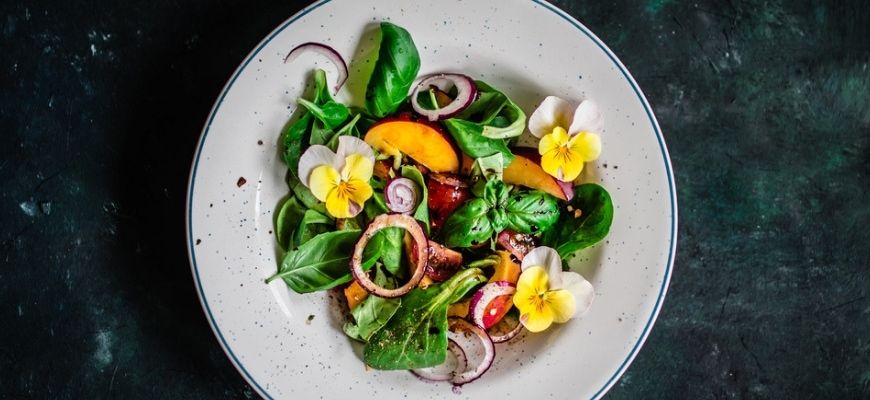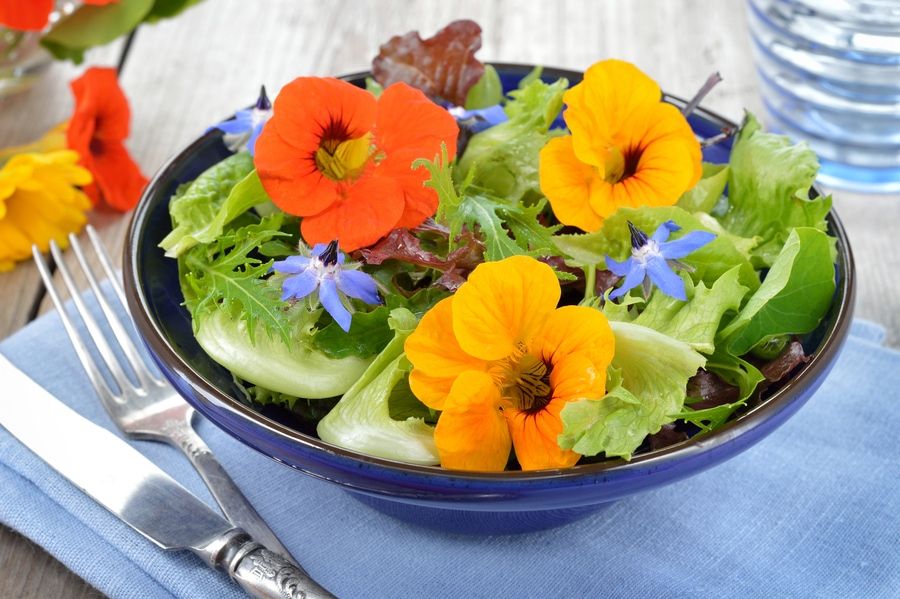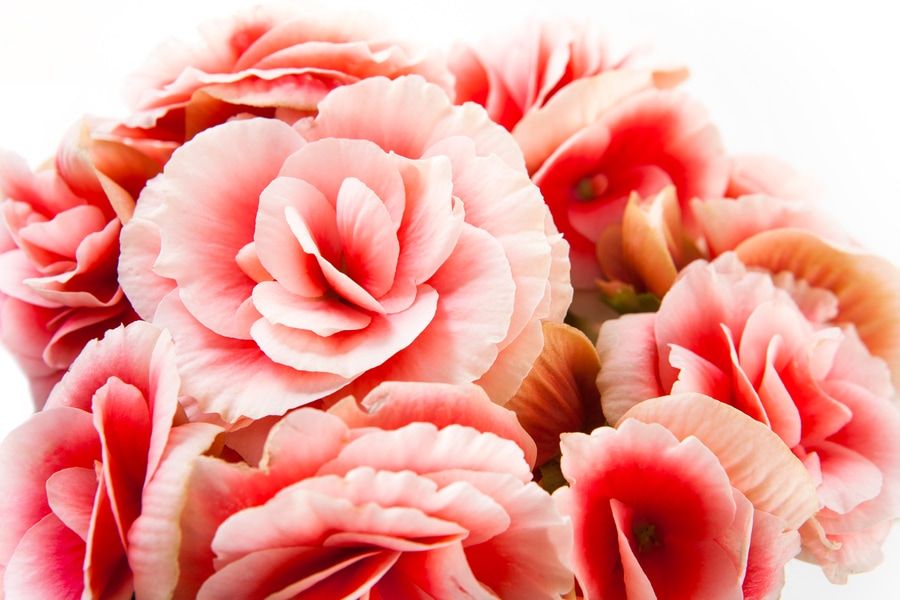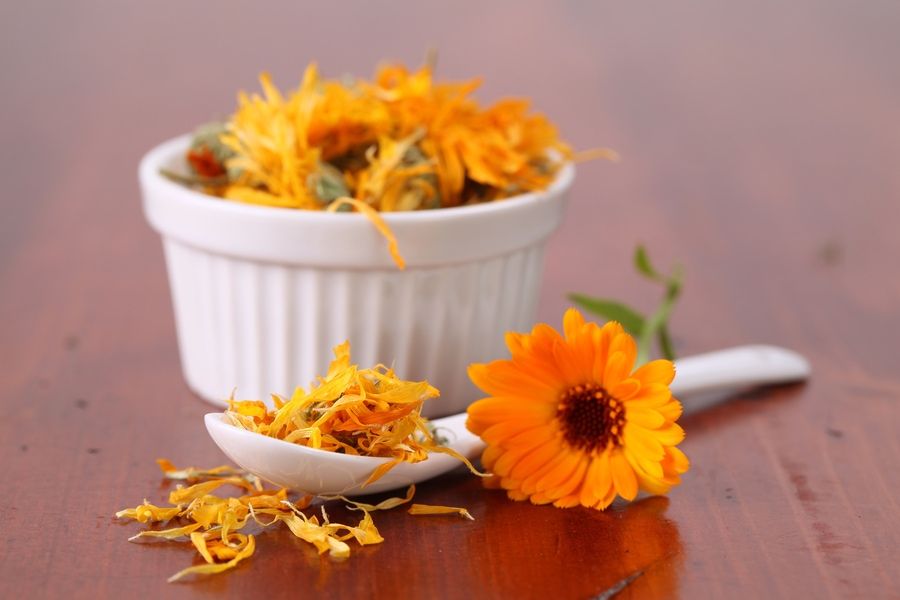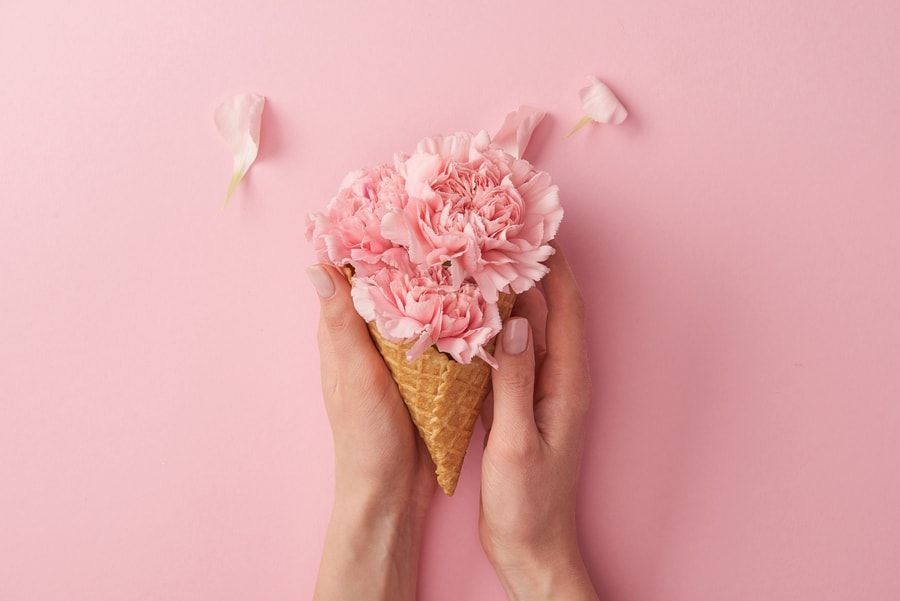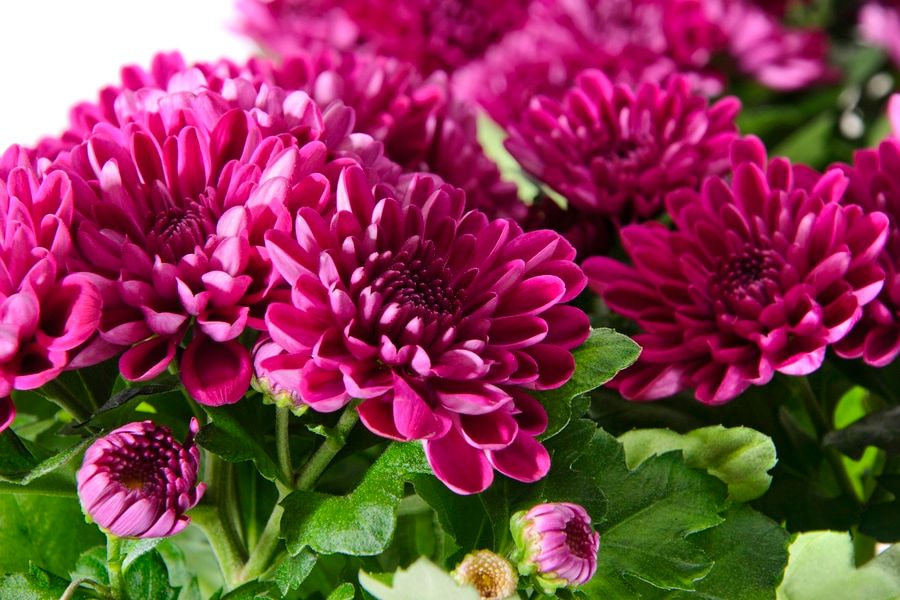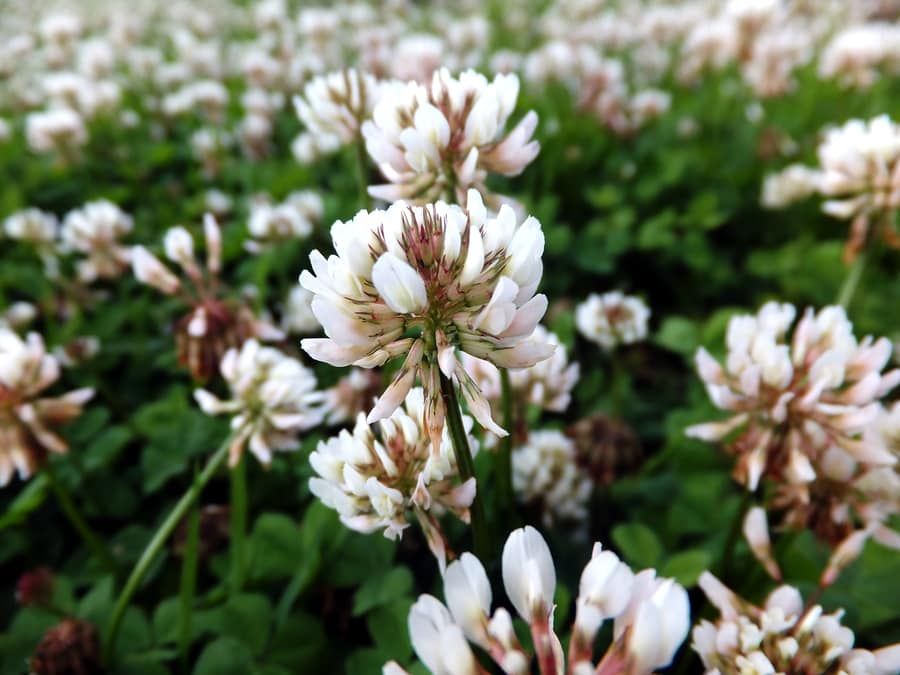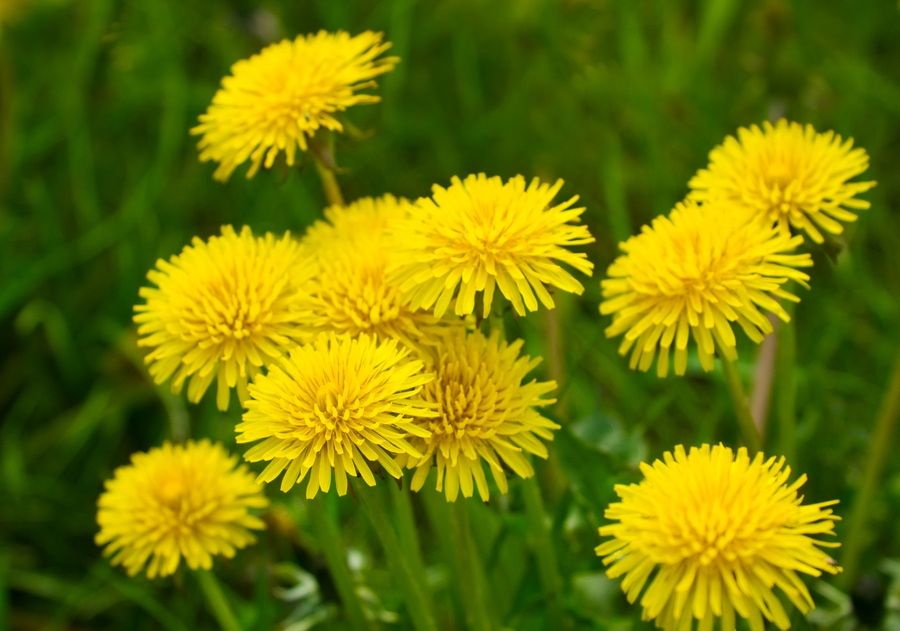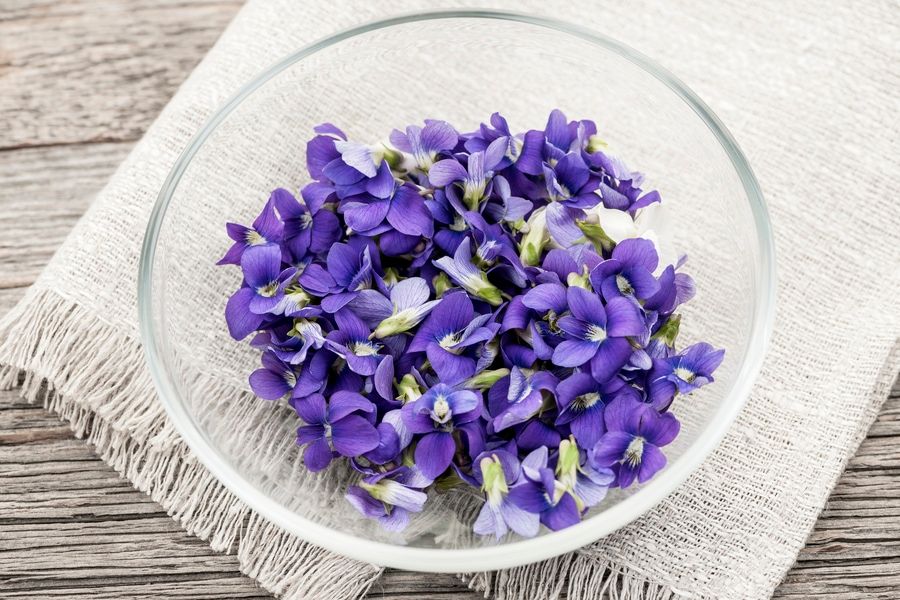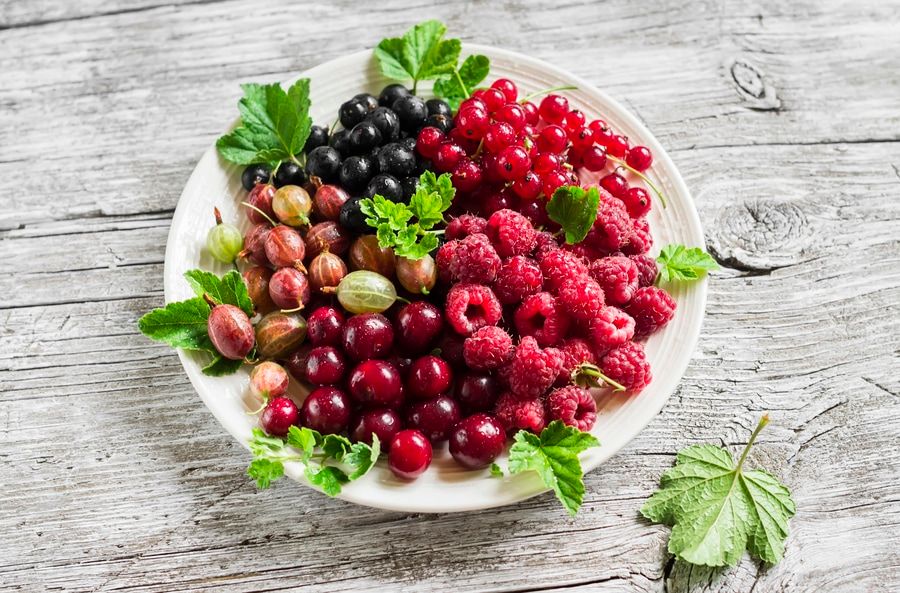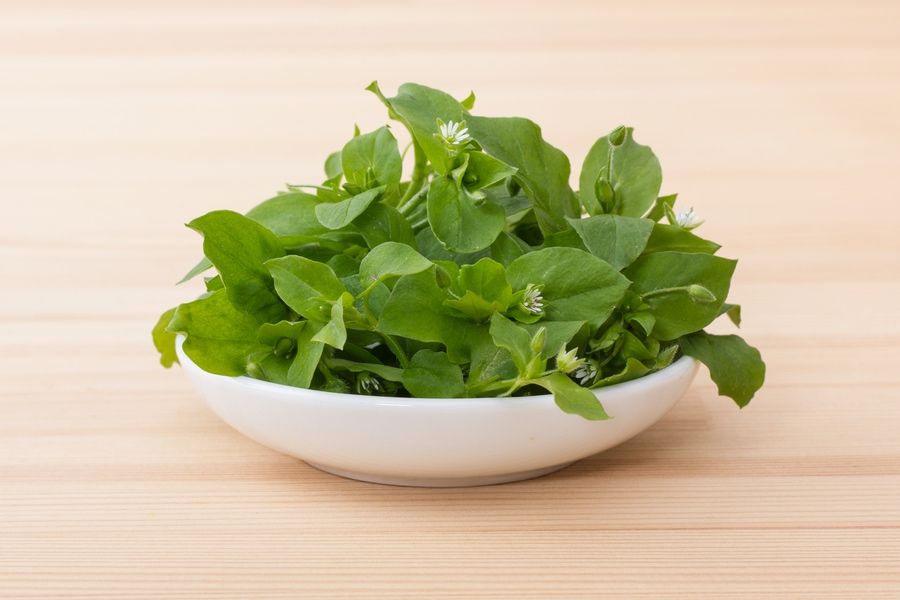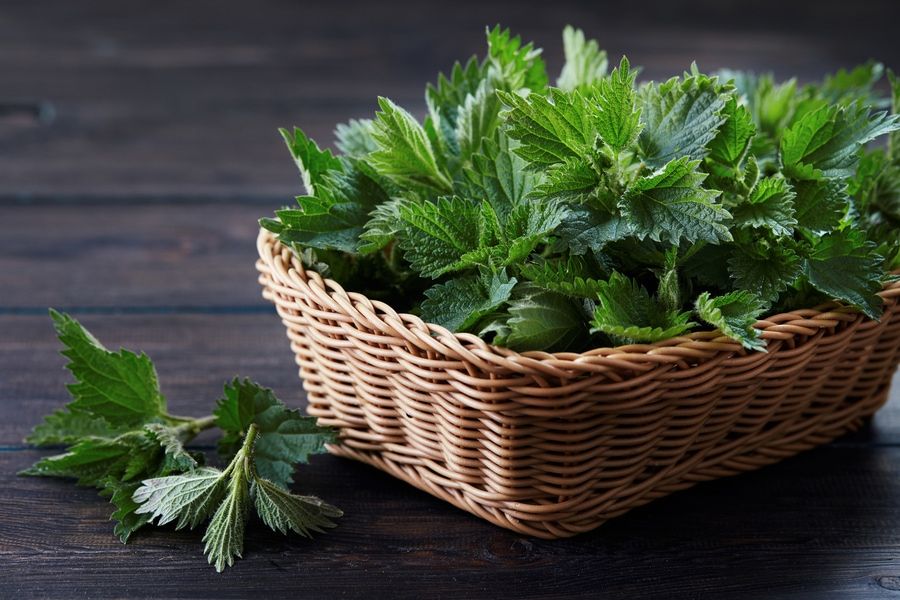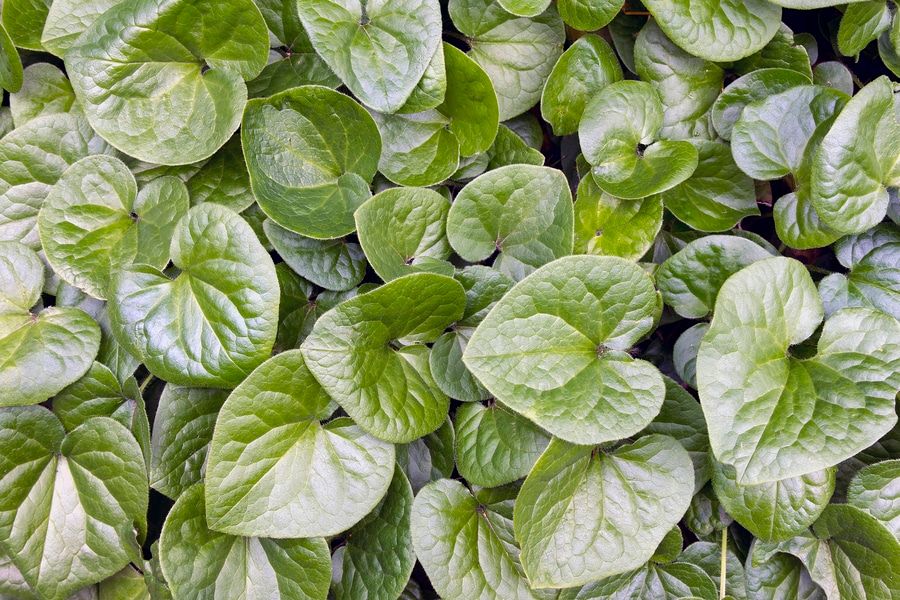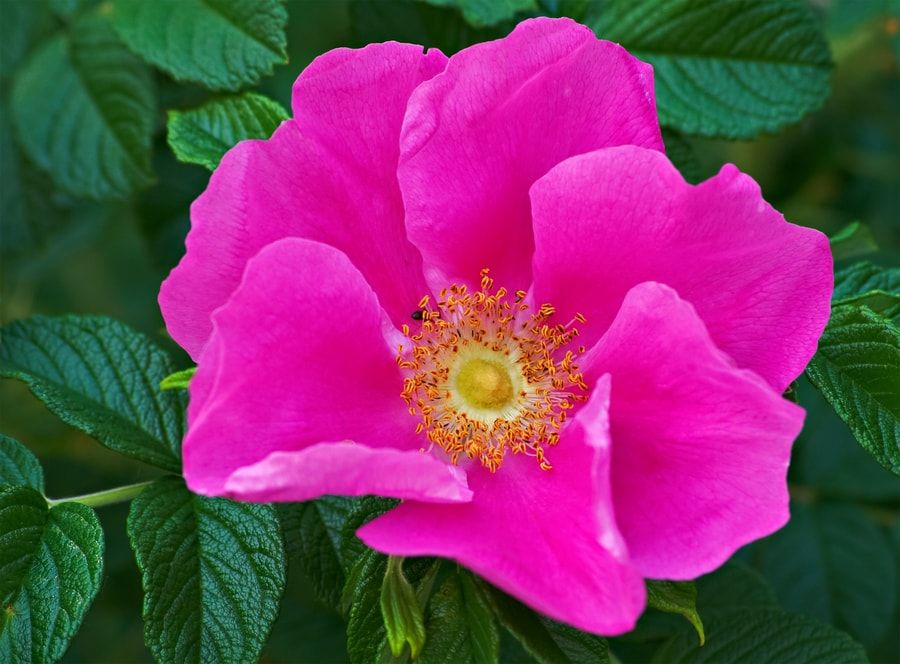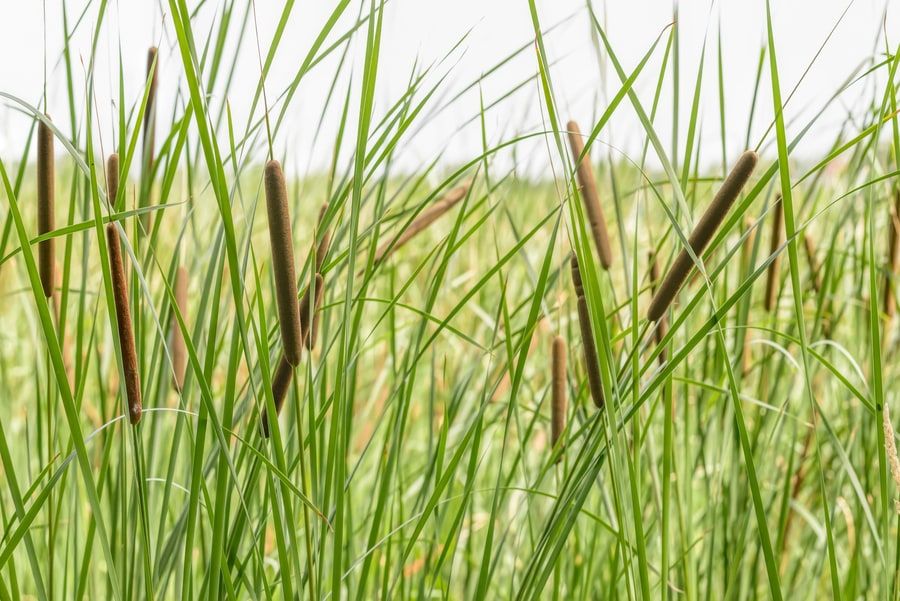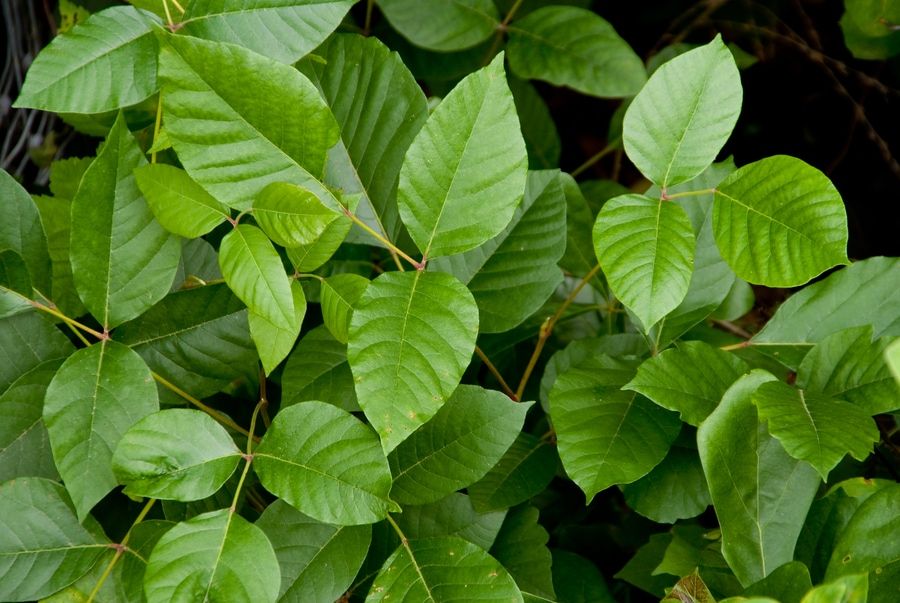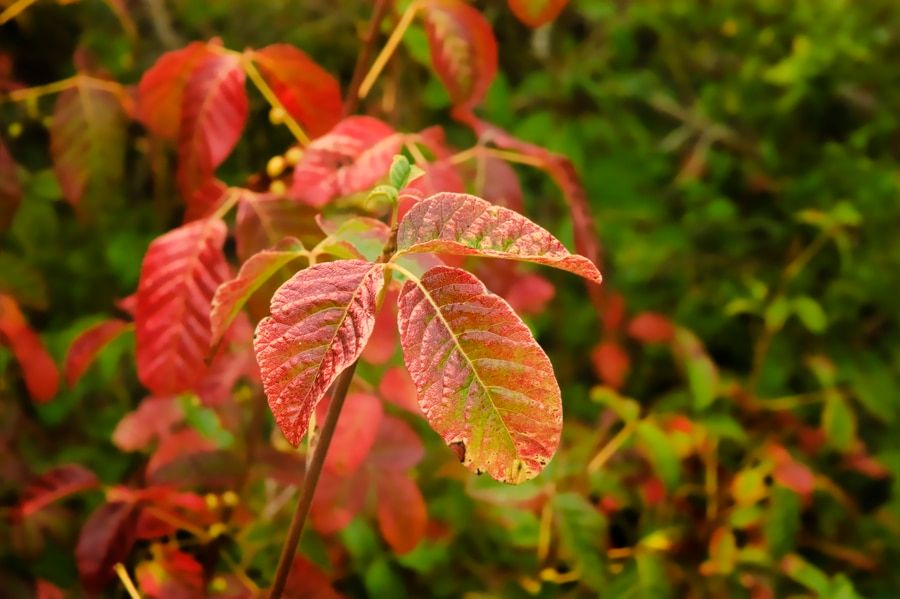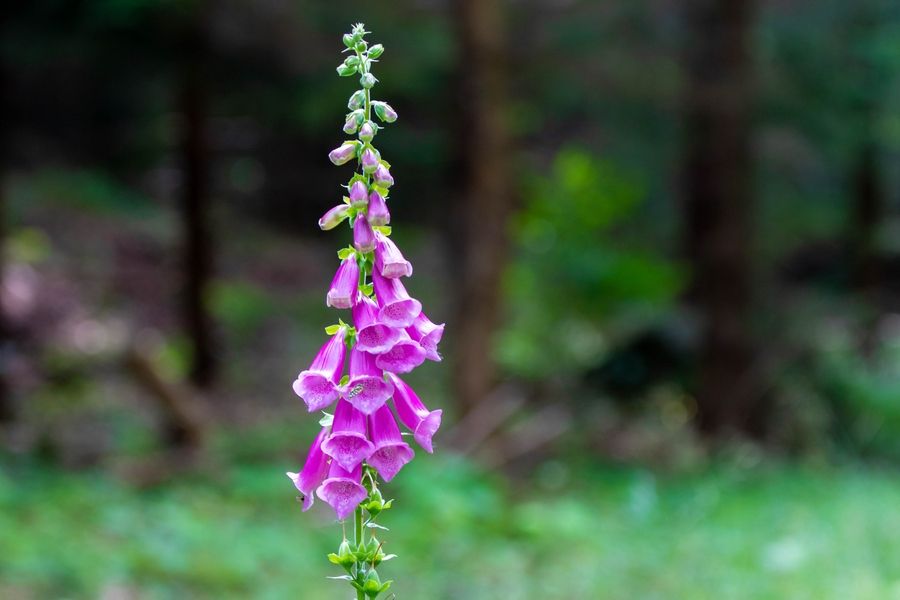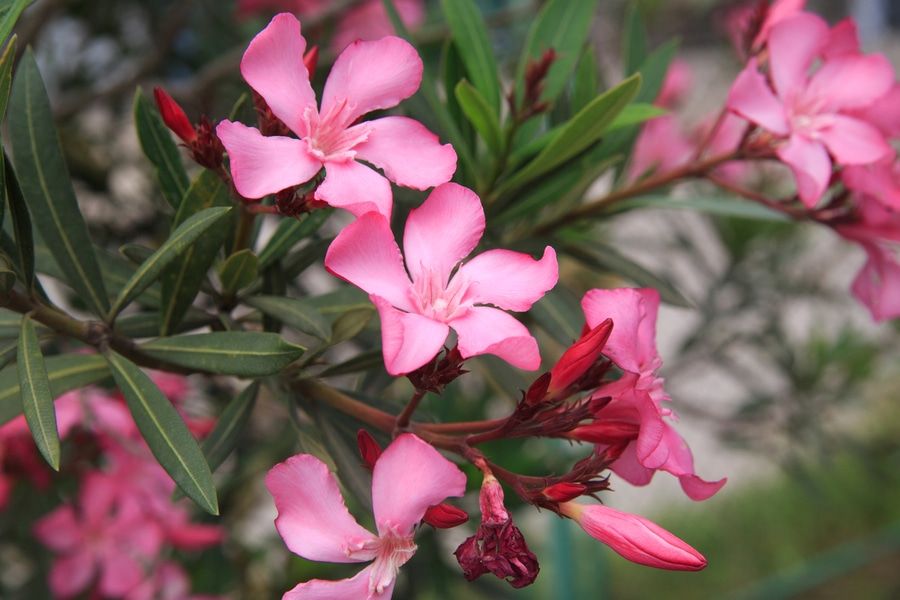Many flowers can be safely incorporated into cakes, salads, cocktails, or various other recipes. Below you'll find a giant list of edible flowers that you can grow in your own garden or purchase for recipes. Many times you'll just be using flower buds for a pop of color, but they can also enhance flavor of savory dishes or be an entire dish unto themselves; you can find dozens of fried and stuffed squash blossom or zucchini flower recipes online, for example.
List of Edible Flowers for Salads & Cakes
When in doubt, don't eat it! Typically you also want to remove pistils and stamen before eating and was them carefully and thoroughly. Sometimes you want the whole flower, sometimes just petals.
Our Favorites: Nasturtium, Borage, and Pansies
Nasturtium, or tropaeolum majus, has bright orange and red flowers. The entire plant is edible and is often used ornamentally in salads or even blended into a pesto. The nasturtium grows quickly and requires full sun. People say they taste like watercress, but it's difficult for me to get past the cognitive dissonance of the color. It just tastes like flower to me-- a sort-of nondescript flavor. Gladiolus are also similarly bland.
Borage flowers look like small blue or white stars (see image above), which is why its also known as starflower, look amazing in salads, and have a cucumber-like taste. I used them once to decorate a boring ice cream and sorbet dessert, adding some needed pizzazz. The plant is actually an annual herb and is used for all types of soups and sauces throughout Europe. They look very similar to rosemary flowers, which are also edible!
Pansies are one of the most popular edible flowers because of the variety of colors and the fact that you can eat the whole darn thing: pistil, stamen, and sepals.
Other Edible Flowers
The daylily (hemerocallis) has a kind of sweet flavor, and many people use the flower petals for red or yellow salad extravagance. They are also used in hot and sour soup in Chinese cuisine.
Hibiscus tastes like tangy cranberry and is great for salads or salad dressings. Obviously it's also used in teas.
Chives, garlic, and many other members of the allium family have have beautiful and edible flowers.
Several herbs produce edible flowers: mint varieties, for example, have flowers that are, well, minty flavored. Anise hyssop, also part of the mint family, tastes like anise and mint! Cilantro flowers have a taste similar to cilantro and yellow dill flowers taste like dill. Also, the snozberries taste like snozberries!
Radish and arugula flowers have a more peppery bitter taste.
Here is a non-comprehensive list of other plants and flowers that are considered to be edible:
- Lilacs
- Dianthus
- Geraniums
- Jasmine blooms are very fragrant.
- Impatiens are perfect for cocktail garnish.
- Chive blossoms, which are a beautiful, bold purple
- Chamomile flowers grow in locations around the world and look like a shasta daisy (yellow and white)
- Honeysuckles
- English daisy (bellis perennis)
- Chicory flowers are edible but really don't taste good-- very bitter. But they are so pretty!
- Violas (including the Johnny-Jump-Up) and violets
- Bee balm
- Cornflower
- Hollyhock
- Currants/Gooseberries
- Chickweed
- Stinging Nettle
- Wild Ginger
- Wild Rose
- Fennel flowers
- Orchids
- Common Cattail
- Many more, some of which are listed below.
Some of these can be commonly seen around your home, while others tend to grow in more wild areas. If you go for a walk in a forest, it is likely that you will pass by a few of them.
Begonia
Begonias are flowers rich in nutrients such as vitamin C, oxalic acid, carbolic acid, and alkaloids. They are quite easy to grow, and while a lot of people use them as summer bedding plants, they parts can also make edible snacks.
How to Identify
There are literally more than 1,000 species of begonias, but just by knowing what the three main types look like, it will be easier to identify almost every variation.
- Begonias with tuberous roots have prominent flowers that come in different shapes and sizes, and can measure anything in between half an inch in diameter to the size of a plate. But the easier way to identify them is to look for their fleshy roots.
- Other types of begonias have roots that penetrate the surface of the soil. The flowers of these begonias are quite small, and outshined by the foliage.
- If you come across a begonia that doesn’t have a fleshy root or one that grows above the soil’s surface, you’re dealing with the third type of begonias. These flowers can have glossy leaves, long canes, or fibrous roots, and can measure anything in between two to twelve feet in height.
Uses for Begonia
Begonias are known as being a good source of vitamin C, but not as generous as citrus fruit. Begonia leaves are edible, and used to treat conditions such as cough, fever, or an upset stomach.
Some of the best ways to include begonias into a meal are:
- Including them in salads
- Using them as soup ingredients
- Adding them to sandwiches.
- Making tea out of the leaves.
- The stems can be used in place of rhubarb in recipes.
The plant needs to be carefully washed before consuming its parts.
Calendula (Marigold)
Calendula is a medicinal herb that’s very easy to grow, and with multiple uses. With edible flowers, calendula can offer a wide range of flavors, from bitter to peppery. While it has many medicinal and culinary uses, women who are pregnant or breastfeeding should avoid consuming calendula.
How to Identify
Calendula can easily be identified thanks to its curves seeds with round ridges or bumps. The common marigold has straight seeds and white tips. This ornamental plant can have between 8 and 24 inches in height, loves the sun, and has beautiful orange and yellow flowers.
Uses for Calendula
The petals are the only edible part of the calendula, so make sure you pick and wash them thoroughly before use. A lot of people use dry calendula as a saffron substitute. You can consume the flowers by:
- Adding them to salads.
- Using them as an ingredient in herbal butters.
- Combining them with cheese spreads.
- Making tea out of the petals.
Calendula also has antibacterial and antimicrobial properties, and can be used to treat burns and cuts. The plant is also rich in antioxidants.
Carnations
The versatility of carnations is fascinating, as it’s being used to make everything from bridal bouquets to cake decorating. The sweet petals of these flowers can be used to desserts, for both aesthetic and flavour reasons.
How to Identify
Carnations are perennial plants that can grow as tall as 32 inches. The plant has a woody base, but also flowers of different colors, including green, yellow, pink, white, red, purple, and orange, and can also be variegates, spotted, serrates, clawed, or cuneate.
Before consuming carnations, it’s advised that you shake them to make all potential insects fall off the flowers. It’s also important to avoid consuming carnations from florists, as they may have been sprayed with pesticides. You can, however, purchase edible carnations from grocery stores.
Uses for Carnations
The uses of carnations are limited only by your imagination. A lot of people describe the taste of carnations as being spicy, while others claim it reminds them of nutmeg. There are many different ways to make good use of the benefit that carnations provide:
- Carnation oils are beneficial in treating skin rashes.
- Carnation tea can relieve stress.
- A mixture of carnation petals and vinegar can be added to bath water to soothe sore and aching muscles.
- Carnation petals act as a great substitute for rose petals in making syrup.
- It is also used as a flavour enhancers in wine and other alcoholic beverages.
Chrysanthemums
Chrysanthemum is a flower found in a variety of warm colors, ranging from orange to yellow, and from red to white. The flower base is bitter, and should always be removed before consumption. Always make sure that you blanch them first.
How to Identify
These flowers typically have a dense foliage mound, which can measure anything in between one to three feet in height. They have dense flowers, with short stalks located above the foliage.
They are also characterised by alternate leaves, with a right-left pattern. Overall, the leaves are oval, but each one of them has five to seven bluntly-pointed lobes. When you touch them, you can feel the fuzzy texture, as well as witness their dark-green color.
Uses for Chrysanthemums
On a general note, all chrysanthemum flowers can be eaten, but they flavour different from one type of flower to another. Some delightful consumption suggestions include:
- Making chrysanthemum tea from the white and yellow flower variations.
- Making wine from chrysanthemum flowers.
- Chrysanthemum flowers can be blanched and their petals extracted, and then added to the dish of your choice.
- Chrysanthemum greens are a rich source of antioxidants and minerals.
- It is also suggested that chewing a few chrysanthemum leaves can help you get rid of migraines.
Clover
Irish symbol, the clover is a legume that people often consider a weed they’d like to get rid of. What a lot of people don’t know that aside from its medicinal uses, clover leaves and blossoms can make tasty snacks, but also yummy salad ingredients. They are characterized by a licorice-like taste.
When they flowers turn brown, they can be very bitter, and are best avoided. When flowers are of brighter colors, they are also very delicious.
How to Identify
Clovers are really easy to identify because of their unique appearance. It’s considered a weed found across many different yards and gardens, it has small flowers and leaves that are shaped like petals.
A lot of people see clover as being a nuisance, and will often go to great lengths to get rid of them. The clover’s stem has three leaves (lucky people may come across four-leaf clovers as well), which are about half an inch long each.
Clover flowers are typically white or light pink in color, and the blooms have a spherical shape, very similar to a ball made from petals.
Uses for Clover
Before cooking clover or adding it to your dishes, make sure you rinse the clovers with cold water. A strainer can help in the process. You can lay the clovers and their blossoms on a paper towel, and leave them until they are completely dry. For speed up the process, consider placing a second paper towel on top, to absorb the excess water.
- Leaves and blossoms can be used as salad ingredients.
- They can also be frozen in water, to make pretty-looking ice cubes.
- Clover blossoms can also be pan fried in oil, after being dusted with flour. They can be delicious snacks.
Dandelions
Dandelions are extremely rich in nutrients, including iron, magnesium, calcium, potassium, as well as vitamin A, B, and C. In fact, it has the highest vitamin A content out of all houseplants.
The roots of a dandelion can extract minerals from the soil, and spread them across the entire plant. As a dandelion withers away, it releases those minerals back into the soil.
How to Identify
While extremely common, a lot of people confuse dandelions with other plants, so the following information might prove useful to many. Dandelions have hairless leaves, with a single flower per stem. The stem, the roots and the leaves exude a characteristic white sap. They are easy to recognise when they form “wish balls”, which can be carried away by the wind for as long as five miles.
Uses for Dandelions
Almost every piece of the dandelion is useful for something:
- The buds make great ingredients for both food and medicine. A lot of people cook them, add them to salads, but they can also be pickled.
- The properties of the root depends on the cultivating season. In springtime, the root can be used as a digestive stimulant. During the fall, roots are sweeter and make a good treat for diabetics.
- The leaves of dandelions are great for salads, even if they have a bitter taste. They are very rich in nutrients, including iron and calcium.
- The flowers make great salad ingredients, but they can also be used to make muffins or pancakes.
Sunflowers
By now, everyone knows that sunflower seeds are some of the best beer companions, are great for use in salads, and make really good oil.
How to Identify
Sunflowers are easy to identify if you pay attention to their growth. Throughout a single day, the sunflower can grow a few more inches in height. Their name derives from the fact that they change positions to follow the sun, and stoop when it’s dark outside.
You can also identify sunflowers by feeling the leaves, which have coarse edges and a dark green color. When you touch them, they have a furry feel. The blooms are composed of several smaller flowers, which is something unique to sunflowers.
Uses for Sunflowers
Sunflowers are, beyond a shred of a doubt, one of the most versatile plants known to man. They have medicinal, skin care, and culinary uses, such as:
- Sunflower oil is extracted from the plant’s seeds, and can be used to make tasty salads, delicious fries and fried foods, but can also keep food fresh for a longer time.
- The seeds of the sunflower are the most commonly-known edible part of the plant, and they can be consumed raw, roasted, be mixed with salads, used to make muffins, any many other tasty treats.
- Sunflower oil can also be used to moisturize skin.
- The leaves, flowers, and roots of a sunflower can be brewed together to make tea.
- Raw sunflower leaves can be boiled or added into salads, and basically be prepared similar to spinach. They taste like artichokes and can be sauteed in various dishes.
Violets
Violets aren’t just some of the most beautiful and vividly-colored flowers you’ve seen: they also have different culinary uses. They make sweets look better, can be turned into tea, perfume, salad ingredients, amongst many other uses.
How to Identify
Violets are quite distinctive compared to other types of flowers, especially due to their kidney-shaped leaves. Even the petal arrangement is quite unique: the five petals are placed two on the upper side, two in the middle, and one larger petal on the lower side of the flower.
While it may be difficult to tell apart one type of violet from the other, the good news is that all violets are edible.
Uses for Violets
Violets have edible leaves and flowers. By consuming two violet leaves every day, you can get the required amount of vitamin C for the day. Violets can be used:
- To decorate desserts, as they make extremely popular wedding cake decorations.
- They can also be used as an ingredient in soups and sautés.
- Violet syrup can also be made from fragrant violet flowers.
- Violet tea can be made by drying violet leaves and flowers.
Currants and Gooseberries
Currents and gooseberries can be found in a variety of different places because they are able to tolerate a wide range of different soil types. This is why they are a common plant that is found right in your own garden. The currant and gooseberry plants produce berries that are safe for human consumption.
How to Identify
If you are looking for currants and gooseberries, they are luckily quite easy to find. The most prominent identifying feature is the leaf, which looks like a maple leaf. The bushes themselves are approximately two to five feet high. Gooseberries have flowers and fruit in clusters at the end of a branch, while currants have more of a straight line of flowers and fruit. The currant plants do not have any thorns, and their ripened fruit is red, black or gold. If it is green, it is too early to be eaten, as it is not ripe yet.
Uses for Currants and Gooseberries
Currants and gooseberries can be eaten on their own without being cooked, but they have a distinctly bitter taste rather than sweet. There are several options of ways that you can work them into recipes, and come up with a tasty treat!
- Berry pancakes
- Cabbage and gooseberries - a Danish style recipe
- Berry apple crisp
- Currant cordial
The tart flavor of currants and gooseberries can be an unusual but delicious additional taste that will work to enhance the entire recipe.
Chickweed
Chickwood is a plant that many people would recognize when they see it, but not know the name of it. Chickweed is, in fact, a weed. It can be found in areas of partial sunlight and shade. Chickweed was originally native to Europe and is now found all over the world.
How to Identify
One of the more popular herbs or weeds, Chickweed has a fairly distinguishable growing pattern. The leaves intertwine with each other, making a criss cross shape. There are also flowers on top of the plant, which are small and white, with a slight opening at the tip. Chickweed is not a large plant; they typically grow anywhere from 5 to 50 cm tall. Chickweed flowers can usually be found blooming in early to mid-spring.
Uses for Chickweed
There are many different foods that chickweed can be found in. For one thing, it makes an excellent base when you are making a salad. Another option would be to add it to your sandwich or wrap. It can also be cooked and added as a side for your meal. Dried Chickweed is also useful in a few other arrangements as well:
- Helps with digestion and upset stomachs
- Good for skin conditions such as acne and boils
- Pain relief and also used as an anti-inflammatory
Chickweed can be considered one of the more useful weeds that you will come across on a frequent basis. Not only are you able to eat it, but it also has several natural benefits that you can use it for as well.
Stinging Nettle
The stinging nettle plant is not one that would typically come to mind when talking about edible plants. However, it is definitely able to be eaten but is important to be careful about how you are doing it. Always ensure that any exposed skin is protected at all times when you are collecting stinging nettle in order to avoid a rash. Each individual hair of a stinging nettle plant contains formic acid, which can burn your skin and leave a painful burning or itchy spot.
How to Identify
As mentioned above, stinging nettle plants have tiny hairs under their leaves. Their stems are a square shape, and the leaves are rough in texture. The flowers on a stinging nettle are usually brown or green in color. This plant grows very fast and is found all over in the wild, as well as in people’s gardens.
Uses for Stinging Nettle
Stinging nettle has numerous health benefits. It contains vitamin A, C, D, and K1, in addition to a wide variety of different minerals. Stinging nettle can be used in the following cocktails:
- Juicing
- Steaming
- Freezing
- Adding to soups and stews
- A tincture made from nettles can help with colds, the flu, and even pneumonia
When collecting nettles, make sure that you are wearing thick gloves and long clothing. This also goes for when you are preparing the nettles for use. Once you have soaked the nettles in hot water, the hairs will no longer release the folic acid.
Wild Ginger
Once wild ginger has settled into an area, it will populate quite quickly within a couple of years. It was initially native to Chicago. Wild ginger is helpful to the ecosystem because it ensures that no non-native plant can take over an area and destroy natural plant life.
How to Identify
Wild ginger grows very low to the ground, about 10-15 cm high. It is found in very shady areas, such as in forests with rich soil. The leaves of the wild ginger plant are shaped like kidney beans. The flowers that bloom from this plant are brown in color and typically bloom in the late springtime.
Uses for Wild Ginger
Wild ginger has been used often in the past as a spice or as a natural relief for stomach pains. Wild ginger has a very bold taste, which is quite distinguishable from other spices. It is possible to use wild ginger as a replacement for regular ginger in a dish, but you would likely be able to notice the difference pretty easily.
People often use wild ginger in their fall and winter dishes, as it fits with the season. For instance, you could grind it up and add it into stew and squash. Wild ginger leaves can be brewed into a tea and enjoyed on a cold, windy day.
Wild Rose
Wild roses are beautiful floral plants, with large and colorful blossoms. However, few people actually realize that these plants are edible. Wild roses require lots of sunlight in order to thrive, and their soil has to be well-drained.
How to Identify
The leaves of a wild rose plant are shaped like an oval and have slightly serrated edges. The stems of this plant are most easily identified by the thorns that cover them. The flowers have many petals, and the color of their flower will usually range from white, red, pink, or purple.
Uses for Wild Roses
Many years ago, Aboriginals would make an ointment from the fresh roots and buds of wild roses and apply them to their sore eyes. In current times, wild roses still have their uses! Rose petals can be eaten, and they could be added into salads to increase the visual effect of the dish. They can also be used as a decorative garnish or frozen in ice cube for an added touch to drinks. They come in a range of colors from blue to pink to purple.
Wild rose seeds can be eaten on their own as well, but they do not taste very good. If they are strained out, their taste should improve. Other flowers that have similar properties are hibiscus, marigold, dandelion, pansies, and petunias.
Common Cattail
Common cattail is a long, straight plant that grows in marshes and wetlands. The top of the plant contains the seeds and pollen. Although common cattail plants grow in wet areas, they require a lot of sunlight. This plant has a tendency to spread all over the environment that it is in, effectively taking the whole area over.
How to Identify
The common cattail is easily recognizable in the fall and winter when the seed on the top of the plant become fluffy and fly away. In the other months, the head of the plant is long and cigar-shaped, in a brown color. It can grow anywhere from 90-270 cm tall and isn’t as common as other of the chart.
Uses for Common Cattail
The lower leaves of the common cattail can be used in salads. If you want to eat the stems of the plant, you can either boil them or eat them raw as they are. Even the flowers of the common cattail can be eaten after they are roasted!
Dangerous and Non-Edible Plants
Now that we have covered the plants that can be eaten and that is friendly, we will also take a look at the not so friendly and dangerous plants. These plants can cause allergies, severe reactions and sometimes can also be fatal. The reaction can be caused by simply coming into contact with these plants or from ingesting any of their plant matter. So the following is a list of plants to watch out for.
Poison Ivy
One of the most common and well-known dangerous plants is poison ivy. Poison ivy is recognizable if you know what to look for, however, if you don’t know how to tell it apart it can be difficult to notice. It grows almost everywhere and can be found in all most all of the states in America. It grows as a green leafy plant with each of its stems diverging into three smaller leaflets. It can grow as a shrub or as a vine depending on the climate and area that it is growing in.
The poison ivy plant is dangerous as it causes itching, rashes and sometimes severe reactions as well. The reason this plant actually causes this is due to a plant oil that is found within it. The plant oil is called urushiol and is an allergen for most people.
The poison ivy plant can cause you to have a reaction to it if you come into direct contact with the plant, or indirect contact with the allergen or sometimes it can also be caused by particles of the allergens that float in the air. The red marks of skin coming into contact with the plant can usually be seen 24 to 72 hours. Similarly, you can come into contact with a pet or gardening tools or sports equipment that has been exposed to poison ivy which can also cause a reaction.
There are many methods to treat a mild rash caused by poison ivy at home. However, if you have a severe reaction, a sense of strong burning, boils, or difficulty in breathing it is important to consult a physician immediately. Some of the steps to take if you notice a poison ivy rash are as follows.
- Make sure to wash the area that came into contact with the poison ivy or indirect contact as soon as possible. Do this with lukewarm water and mild soap.
- Try to wash anything else that may be contaminated such as clothes, socks, tools, toys, shoes and even pets.
- You can apply a cold compress during the blistering to allow for some relief
- To relieve the itch, you can take a cool shower or use a mixture of water and baking soda
- Make sure to consult a doctor if you have severe itching, blistering or swelling, or if you have experience symptoms in sensitive areas such as eyes, throat or genitals. You should also see a doctor if you have a fever or difficulty breathing, or a rash that lasts longer than ten days.
Poison Oak
Another very common and dangerous plant is the poison oak. It is very much similar to poison ivy however the leaves resemble an oak tree leaves more. Generally, the top side or the side that faces the sun of the leaves are a darker shade of green and has tiny hairs on it as compared to the bottom side of the leaves.
It also causes an allergic reaction based on the same plant sap as poison ivy called urushiol. If the leaves of the poison oak or any part of the plant is damaged or broken the urushiol is released. Even the dead leaves, stems and roots of the plant contain this oil and can cause a reaction. Similarly, if any part of the plant is burned the oil can be inhaled as well.
The rash of poison oak usually appears where the skin came into contact with the plant but can also occur in other areas. It usually starts with itching and mild irritation and then it gradually gets worse and develops into a red and highly itchy rash. It can also form bumps and blisters. The rash usually takes about three to four weeks to recover from.
However, if severe symptoms occur you should consult a doctor as soon as possible. These severe reactions can include, having headaches, any difficulties in breathing or swallowing, swelling near the eyes, lips, face or on the tongue, any signs of an infection such as pus, increasing redness or pain, and swelling of the lymph nodes.
Foxglove
Foxglove is a very attractive plant and is often found in the garden for its beauty, although it grows in the wild as well. The flowers of this plant are bell-shaped and are usually a bright purple color, however, they can be white, pink or yellow in color as well. They generally have a fruit that is full of seeds and the flowers bloom in the spring. The pretty flowers and fruit often attract children which is very dangerous as all parts of this plant are very poisonous.
The actual scientific name for the foxglove plant is Digitalis purpurea, and it is actually used as a medication for heart problems. Medication is derived from the foxglove plant and a form of it is called digoxin. By measuring the concentration of digoxin within the blood, you can detect if a person has foxglove poisoning.
When the plant is turned into medication for the heart, it is used with a controlled dosage and is very valuable in treating heart failure. It can help a heart that is weak pump blood harder. However, this makes it very dangerous if it is ingested out of a medical context without a controlled dosage.
If people consume any part of the plant or make any kind of tea from the leaves, they are essentially consuming a not prescribed and unregulated dose of heart medication. This can have a very dangerous effect on their heart, it can cause their heart rate to become very slow or become irregular. Both these situations can be very dangerous and can put someone’s life in danger.
Oleander
Oleanders are tall shrubs that have leather like leaves which grow in groups of three. They have bright flowers bunches that grow at the end of their branches. The flowers can be a variety of colors ranging from red to pink to white. Although they are quite commonly seen in gardens and botanical areas, they are highly toxic. All parts of the plant are immensely poisonous.
Although the plant is very toxic it is also used to treat many medical issues. The seeds and leaves of the oleander plant are used to make medicines. Some of the medical conditions that it is used to treat are cancer, leprosy, asthma, epilepsy, painful menstruation, malaria, ringworm, venereal disease, and indigestion. It is also sometimes used to cause abortions.
However, it is immensely important that no part of the oleander is consumed without proper medical consultation and prescription. If it is consumed there can be severe reactions and can lead to fatality. Some symptoms include serious stomach pain, burning in the mouth, diarrhea, nausea, vomiting, headaches, serious heart problems and difficulty breathing.
Consuming the seeds, leaves and oleander leaf tea has caused people to become deadly poisoned. There have even been occurrences where a single leaf was enough to lead to the death of an adult.
The Bottom Line
There are many wonderful plants available in bulk online, in your garden, or at stores like Whole Foods for fairly cheap. They are to use whether that be out in the wild or in the comfort of our own gardens. It is important however to be able to recognize these plants and determine whether they are safe for consumption or not. Although, most plants are harmless when we come into contact with them it is always important to be careful when using for health benefits. Especially when it comes to consumption of plants, even the most common of plants can be harmful if ingested. Always try to have an expert identify a plant or be certain that you know the plant before consumption.

